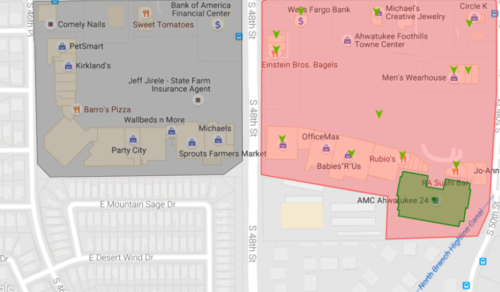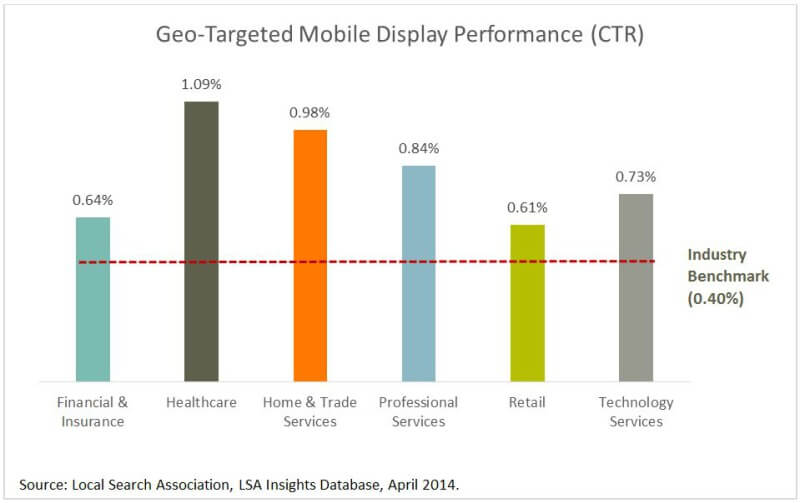
Marketing to local consumers online used to exclusively mean targeting cities and zip codes. Today, it is a whole different ball game. Technology now allows us to pinpoint a target consumer’s location to the very spot where they are standing.
I promise you, it’s not as creepy as it sounds, plus it gives ad agencies, like us, an amazing opportunity to serve up the most relevant advertisements, to the right consumers, at the perfect time, and in the most convenient locations. Wouldn’t you love to get a coupon for your favorite pizza place served right to your phone while you are browsing the store next door?
What is Location-Based Targeting?
Location-based targeting comes from the idea that we carry our smartphones around everywhere we go and the majority of us willingly share our location data. Because of this, marketers can pull all types of data about where we have been, how often we go there, and where we are right now. Based on the places you go, assumptions can be made about your interests. This information opens up a whole new world of advertising opportunities. It’s no surprise that the most effective ads are the ones that are customized and relevant to your audience. Location-based targeting is one of the latest, most effective way to make this possible. It doesn’t even matter what vertical your business is in; a study by the Local Search Association revealed the click-through rate for geotargeted mobile display ads were higher than the industry benchmark across the board.
Location-Based Targeting Strategies
There are several different ways you can utilize this technology in mobile advertising, but I have outlined a few of my favorites below.
Geofencing
This literally draws a virtual fence around a specific area and allows marketers to serve up ads only to the consumers who are within that exact “fence.”
Example: A movie theater can serve up ads to consumers inside nearby restaurants during peak meal times, giving them a coupon for movie tickets incentivising them to catch a movie after lunch or dinner.

Retargeting
This technology compiles a list of users who have recently visited similar businesses and serves them your ad.
Example: You are a new craft cocktail bar looking for high-end clients. You can serve up ads to users who have visited other local craft beer and cocktail bars.
Location-Based Behaviors
This strategy gathers information on places consumers visit and assumes behaviors that you may be interested in targeting.
Example: Looking to target moms with young children? Well, you can specifically serve ads to women who frequently travel to preschools, daycares, and baby supply stores.
Want to target health-conscious people? You can serve ads to people who frequently visit the gym and health food stores.
Five Quick Tips for Executing a Location-Based Targeting Campaign
- Get to know your target audience’s behaviors and do your research on where they go.
- Research businesses nearby and identify those with large amounts of traffic.
- Identify a radius for how far consumers are willing to travel to get to your store. Depending on if you’re one of many coffee shops or a specialty store with little local competition, consumers may or may not be willing to travel more than a couple miles to get to you. Setting a geofence outside of this radius is just a waste of time and budget.
- Invest in good creative. Poorly designed ads with little strategy will likely flop, no matter who you display them to.
- Test, test, test! Everything from creative to locations to devices that you advertise on should constantly be tested to determine what brings you the best results.
Want to try location-based advertising for your business? We can help! Contact us for more information.

